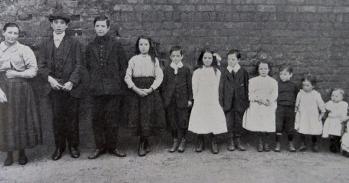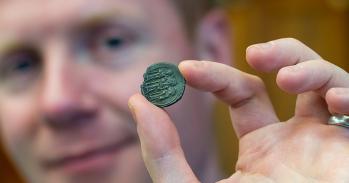
The 12th-century German “Chronicle of the Emperors” (Kaiserchronik) – widely regarded by scholars as one of the most important literary works of the European Middle Ages – is to receive a landmark new edition.
The 12th-century German “Chronicle of the Emperors” (Kaiserchronik) – widely regarded by scholars as one of the most important literary works of the European Middle Ages – is to receive a landmark new edition.
The Kaiserchronik is hugely important in terms of literature, linguistics and history. The key for us is really to ensure that for the first time it reaches an audience outside the world of medieval German studies.
Mark Chinca
Originally written in about 1150, the Kaiserchronik is a huge, 17,000-line verse chronicle, which recounts the exploits of German kings and rulers. It was the first document of its kind in a language other than Latin. Complete revisions appeared in about 1200 and 1250, and the work continued to be copied in manuscripts down to the end of the sixteenth century. Together, they provide rich and unique insights into the changing trends of literary production and tastes.
Now the Department of German at the University of Cambridge has secured almost £1million in research funding from the Arts and Humanities Research Council - its largest ever grant and one of the most significant of its kind in the British Arts and Humanities in recent years – to produce a new edition.
Surprisingly, the Kaiserchronik has been subject to considerable neglect. Despite its multifaceted presence in German culture for almost half a millennium, it is remarkable that scholars’ grasp of the work and its influence should still be so tenuous. Literary medievalists have overlooked it because they associate it with a particular genre that has traditionally been marginal to their interests. Historians do not always have the training to read a long text in a non-standard version of Middle-High German and many see it as too literary, containing nothing more than stories and myths.
Additionally, the standard commentary is 70 years old, and the only editions, which date back to the 19th century, reduce the text to just one of its three major strands and give little prominence to the 50 manuscripts that transmitted it down to the late 16th-century. The chronicle’s extraordinary legacy and longevity have yet to be explored in depth.
The new project aims to resolve these shortcomings, producing a critical edition that incorporates the original text and its major reworkings with an English translation and a new commentary. In addition, the team will produce a single volume for students, making it possible to study and teach the Kaiserchronik in universities for the first time. Original manuscripts will be digitised and placed online as an open-access resource, via the Digital Library of Medieval Manuscripts, based at Johns Hopkins University, Baltimore.
Over the next five years, the team, led by Dr Mark Chinca and Dr Christopher Young at Cambridge, will collaborate with world-leading German codicologist Professor Jürgen Wolf and others at the University of Marburg, in Hessen. German medievalists have greeted the AHRC’s funding decision as “sensational news for the subject area in general”, while historians working on the project’s advisory board have described the initiative as a “godsend” that promises to “transform the teaching of medieval Germany”.
“The Kaiserchronik is hugely important in terms of literature, linguistics and history,” said Mark Chinca. “The key for us is really to ensure that for the first time it reaches an audience outside the world of medieval German studies. Historians, for example, have long been interested in it but there is no full critical edition or English translation. This project will explore its significance and legacy, but we also hope to secure for the work the profile it deserves.”
The text throws up many unanswered questions, including the very fundamental one of who wrote it in the first place, and why. One thing is clear already, however. The document itself did for the German-speaking peoples of medieval Europe what Geoffrey of Monmouth, who lived at roughly the same time, did for the people of the British Isles. Monmouth’s History of the Kings of Britain placed “the British” in the context of a foundation myth linked to Troy, Rome and Arthurian legend. Similarly, the Kaiserchronik attempted to present the German peoples as natural successors to Rome itself, shoe-horning them into a history which takes in the foundation of Rome and the achievements of Julius Caesar.
Although much of this history consists of myths and legends, for researchers, it offers an insight into how the German-speaking peoples of the 12th century saw themselves, their ideas about ethnicity and religion, their cultural identity, their notions of the past, the relationship between Church and Empire, and more.
A further fundamental question is how the chronicle links up with other historical epics of the age, such as Geoffrey of Monmouth’s, and what this tells us about the connections and mutual influences of the people who made, read and heard them. “One of the intriguing things is that a number of similarly-organised western European chronicles appeared at this time,” Christopher Young commented. “The interesting question is why they appeared where they did.”
“We don’t yet know whether these were the result of shared cultural traditions, links between the elites, or both. It is possible that the German elites of the time looked to the Anglo-Norman world and saw a model for writing their own history. These questions remain unanswered because to date scholars have seen the Kaiserchronik only as a feature of German history and literary tradition. For the first time, we are hoping to show that it is a fundamental part of European cultural history as a whole.”
This work is licensed under a Creative Commons Licence. If you use this content on your site please link back to this page.





